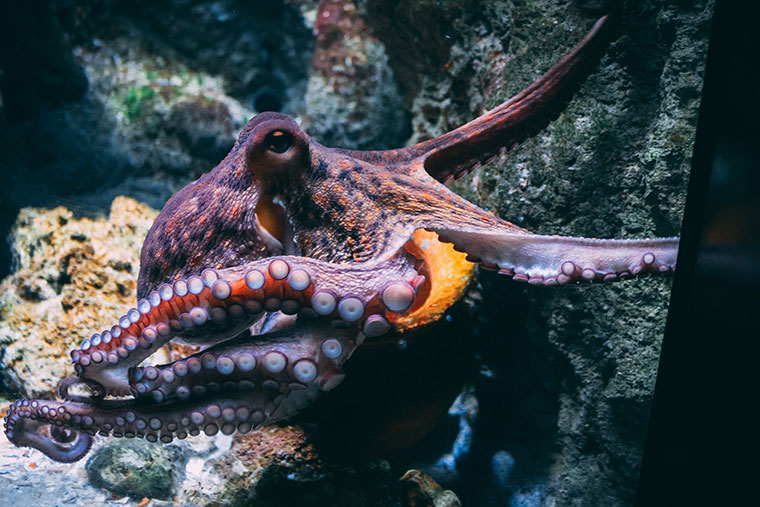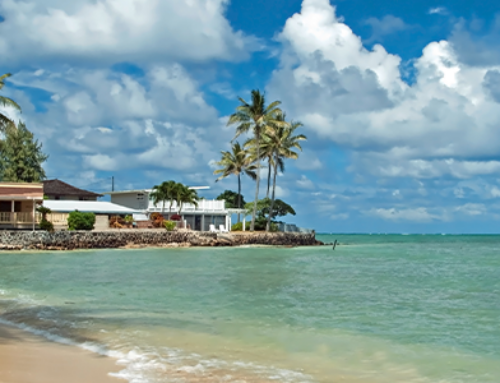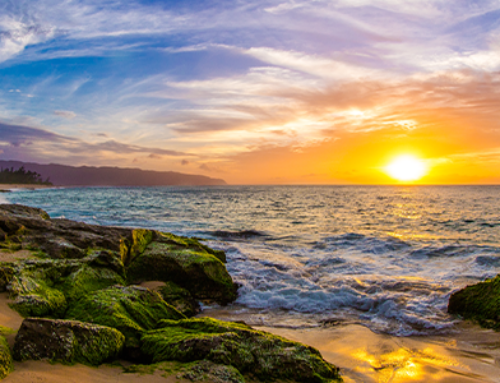Hawaii is an isolated place, with thousands of miles of open ocean surrounding the island chain. However, Hawaii’s solitary position has created an incredible number of endemic species in the archipelago—ones you won’t find anywhere else in the world.
endemic: an organism that is restricted or peculiar to a locality or region (Source: Merriam-Webster)
Nowhere is this more evident than in the waters around Hawaii. Whether you’re snorkeling or diving, you’ll find tons of incredible fish, coral, and invertebrates that are unique to the area. In fact, NOAA researchers estimate that 43% of species on deeper coral reefs are endemic to Hawaii. On the shallower Hawaiian reefs, that number is closer to 17%—still a significant number!
In this article, we’ll give you a glimpse of the wide variety of extraordinary endemic sea species you’ll find in Hawaii. While you’re in Hawaii, enjoying those gorgeous turquoise waters, keep your eyes out for these fascinating creatures.
But first, let’s tackle the common question that comes to mind when people first hear how many endemic species can be found in Hawaii.
Where Did Hawaii’s Endemic Species Come From?
It feels like that classic “chicken or the egg” conundrum. If a species of fish is only found in Hawaii, where did it come from in the first place? How did it get to this isolated archipelago? Doesn’t it have ancestors somewhere?
Scientists currently believe that ancestors of these endemic species made their way to the Hawaiian islands long before human arrival, perhaps carried by ocean currents. Then, over the course of millions of years (Keep in mind that Kauai was formed about 5 million years ago, while Oahu is about 3.7 million years old! ) these species evolved significantly, creating the only-in-Hawaii versions you see today.
By the way, if you’re curious to see what this process looks like on land, you only have to look at the evolution of the Hawaiian honeycreeper. At one point in time, there were more than 50 distinct species of this fascinating bird, which scientists believe evolved from an Asian finch that arrived in the archipelago millions of years ago.
Now that we understand how these endemic species got to Hawaii, let’s head under the sea to take a closer look.
The Hawaiian Octopus (Octopus hawaiiensis)
In one interpretation of the Kumulipo, the Hawaiian creation myth, the octopus (or he’e in Hawaiian) is a holdover from the universe that existed before ours. Whether that translation holds, the he’e plays an important role in ancient Hawaiian tradition, in which the god Kanaloa takes the form of an octopus or squid. Octopus also plays a big role in many dishes in Hawaii, where it’s often served smoked, dried, grilled, or as poke.
If you want to see an octopus in the wild in Hawaii, you’ll have to look carefully. Octopus are experts in camouflage and often change color to match the reef around them. Occasionally, their eyes can give them away, so swim slowly and scan the reef vigilantly!
The Milletseed Butterfly Fish (Chaetodon miliaris)
You’ll find a wide range of colorful butterfly fish on the reefs around Hawaii. These small, flat creatures have distinctive markings that make them a favorite to photograph.
Often, these species are given practical names that describe these features, like the raccoon butterflyfish, which have a black, raccoon-like mask across their eyes. The milletseed butterfly fish was named for the spots on its body, which resemble tiny seeds.
Many butterflyfish also have a spot toward the back end of their bodies. It’s believed that this marking helps these fish evade predators, who confuse the spot for an eye. By luring them into making an off-center strike, the spot allows the butterfly fish to escape before a predator can get a good grasp.
While butterflyfish are found in many places around the world, the milletseed butterfly fish, along with a few other species, are endemic to Hawaii.
The Domino Damselfish (Dascyllus albisella)
When you hear the name “Hawaiian domino damselfish,” you’d probably expect to see a fish with spots. If you’re lucky enough to spot a juvenile Hawaiian domino, that’s exactly what you’ll get. As you can see from the picture above, the body of the juvenile domino damselfish has a deep black body with three spots, one on each side and one between its eyes, like the spots on a domino.
However, if you run into an adult Hawaiian domino damselfish, its name doesn’t quite make as much sense. Like many other species of damselfish, the juvenile Hawaiian domino looks quite different from the adult version. By the time this damselfish reaches maturity, its white spots have spread. Although its face and fins remain black, the damselfish’s body is largely white, which still gives it a striking bi-color appearance.
Damselfish can be territorial. If you spend time slowly drifting over their section of reef, you may see these little fish chasing others away from their zone. They may be little, but they’re fierce!
Hawaiian Cleaner Wrasse (Labroides phthirophagus)
In a balanced ecosystem, every organism has its job. Cleaner wrasse are no exception, and their name describes their job perfectly. These tiny fish flit around other creatures, eating tiny parasites and dead cells from around their mouth and gills.
Some cleaner wrasse even set up what’s called a “cleaning station”—a specific area where they wait for other fish to swim up for a grooming. It’s an extraordinary sight to see. If you want to find one while you’re in the water, drift very slowly over the reef and keep sudden movements at a minimum to avoid startling either the wrasse or the creature being cleaned.
Hawaiian Spiny Lobster (Panulirus marginatus)
If you’ve never done a night dive or snorkel, you might be surprised to know that coral reefs look different at night. Certain corals bloom, parrotfish sleep, and different creatures head out and about, including lobster. Hawaii’s endemic lobster—the Hawaiian spiny lobster—is one of those night owls that you’re more likely to see in the open during the dark hours of the night.
During the day, lobster usually hide in cracks, crevices, and mini-caves on the reef. Your best bet is to look for the tips of their antennae, which often peek out from their hiding spot. These antennae act as a lobster’s early-warning system for detecting potential predators.
Hawaiian Whitespotted Pufferfish (Canthigaster jactator)
What’s not to love about this distinctive fish? From its pointed snout to its distinctive pattern to its delicate fins, the Hawaiian whitespotted pufferfish is a looker. You’ll occasionally find this feisty little fish nipping at the fins of other fish—a real troublemaker! It’s believed that these tiny fish, which only get to be a few inches long, may use this behavior to defend their territory against invaders.
Hawaiian Red Lionfish (Pterois sphex)
If you’ve spent any time diving or snorkeling in the Caribbean, you may scowl at the sight of a lionfish in Hawaii—or even reach for a spear.
However, the Hawaiian red lionfish with its dramatic coloring and plumage is actually endemic to Hawaii. It’s true that lionfish in other parts of the world have wreaked havoc in areas where they have no natural predators. However, the Hawaiian red lionfish belongs in this ecosystem. So you can simply enjoy the stunning sight of these striped fish and their extraordinary appendages, knowing that they’re only occupying their rightful place in their native environment.
Looking Under the Surface
These seven species are just the tip of the iceberg when it comes to the incredible sea creatures you’ll see in Hawaii. And don’t forget about coral! Coral is a living invertebrate with several species endemic to Hawaii, including serpentine cup coral, Hawaiian plate coral, and rice coral. That’s why it’s so important to avoid stepping on or touching coral, since you can easily damage these living organisms.
When you land in Hawaii, you’ll see plenty of amazing sights on land, including rainforests, waterfalls, white sand beaches, dormant volcanoes—and all the endemic species that call these areas their home. Just remember that there’s a whole other world just under the surface of the ocean, which holds just as many (if not more!) endemic wonders.
Moving to Hawaii? We’d be happy to help you make a safe, easy, and affordable move to the Aloha State, so you can spend plenty of time exploring Hawaii’s natural wonders and endemic species. Get started with a complimentary quote from one of our experts.
Tell us about your move!



